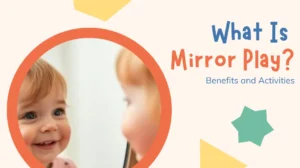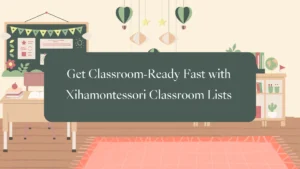In today’s world, fostering creativity in kids has never been more critical. Process Art Preschool offers a unique, child-centered approach that focuses on the journey of creation rather than the final product. Imagine a preschool classroom where children are encouraged to explore colors, textures, and shapes without the pressure of “getting it right.” Here, every child is free to express themselves, experiment, and make choices independently, fostering a strong sense of self-confidence, creativity, and problem-solving skills. This approach aligns with early childhood education principles, promoting hands-on learning, resilience, and a growth mindset in preschoolers.
Process Art Preschool is a unique educational approach that emphasizes the act of creation rather than the final product. Unlike traditional art methods that are often outcome-focused, process art allows children to explore materials, express themselves, and learn through hands-on activities.
Whether you’re an educator looking to enrich your classroom or a parent wanting to understand the benefits of process art for preschoolers, this guide provides everything you need to know. We’ll explore the core benefits of process art, share ideas for preschool process art projects, and even guide you on setting up an inspiring process art space in preschool. Let’s dive in and discover how Process Art can transform early education and help young minds flourish.
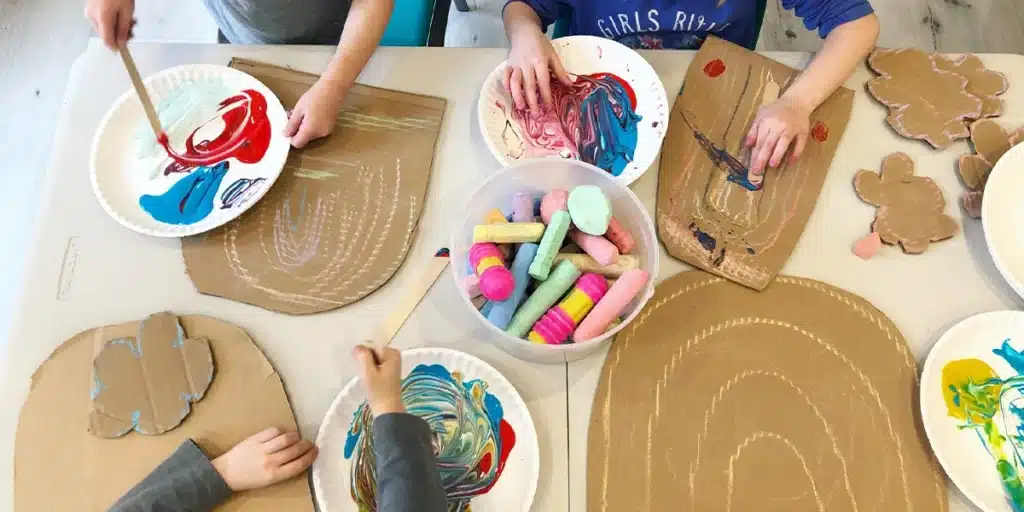
Understanding Process Art in Preschool
Children are encouraged to explore art materials without a predefined goal in a process art preschool environment. This approach shifts the focus from creating a “perfect” artwork to engaging in a meaningful, hands-on experience.
What is process art in preschool? Unlike product art, which often involves following instructions to create a specific outcome, process art encourages children to make decisions, express their thoughts, and develop their ideas independently. This approach fosters creativity and problem-solving, as children learn through trial and error, embracing mistakes as learning opportunities. In process art, each child’s creation is unique, reflecting their personality, choices, and emotions.
Why is Process Art Important for Preschoolers?
Why is process art important for preschoolers? Process Art is essential for your children’s development, supporting multiple aspects of growth:
- Encourages Individuality: Process art allows children to express their unique perspectives, building self-confidence and a sense of identity.
- Promotes Emotional Growth: In a process art preschool setting, children learn to express their emotions and process them through creativity, which helps develop emotional resilience.
- Builds a Growth Mindset: By focusing on exploration, children learn that it’s okay to make mistakes and that learning often comes from experimenting. This growth mindset supports long-term personal development.
- Enhances Social Skills: When children work in a shared space, they learn to share, observe, and communicate, building empathy and social awareness.
Through these process art experiences, preschoolers develop a strong foundation for lifelong learning, valuing the journey over the destination.
Critical Benefits of Process Art for PreschoolersProcess Art
Beyond its creative aspects, process art for preschoolers offers various developmental benefits. Let’s look at these specific advantages:
Cognitive Development
Process-based art activities engage children in problem-solving and decision-making. For instance, experimenting with color mixing or texture exploration helps preschoolers understand cause and effect. These process art projects for preschoolers allow children to develop critical thinking and cognitive flexibility, essential skills for early learning.
Language and Communication Skills
Through process art activities, children are encouraged to describe their choices, experiences, and emotions. Teachers can facilitate this by asking questions like, “What inspired your colors?” or “How does this texture feel?” Such interactions support vocabulary development and improve expressive language skills.
Physical Coordination
Using materials like paintbrushes, clay, and scissors strengthens fine motor skills, which are crucial in preschool. Activities like molding with play dough or finger painting for sensory exploration help children improve hand-eye coordination and build the muscle strength needed for writing and other precise movements.
Emotional and Social Development
In a process art preschool setting, children work alongside peers, learning to share materials, appreciate each other’s unique creations, and celebrate diversity. This exposure builds empathy and fosters social skills as children interact and communicate within a shared space.
These benefits of process art for preschoolers make it a valuable approach for holistic growth, enhancing cognitive, social, and emotional development.

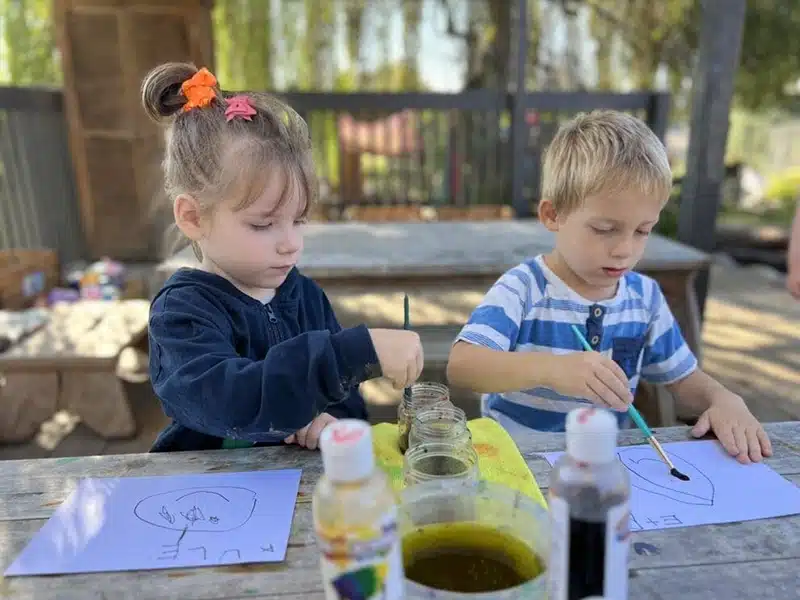
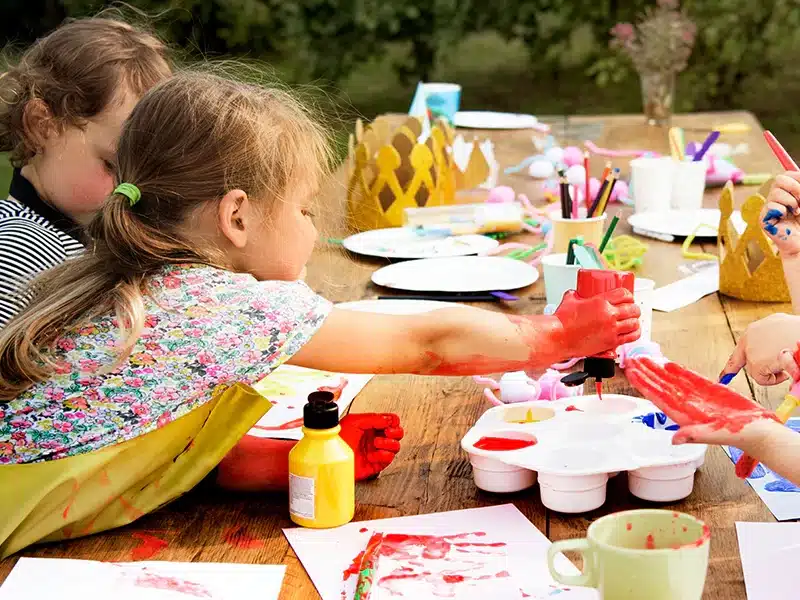
Process Art vs. Product Art: Finding the Right Approach
In preschool education, understanding the difference between process art and product art is essential for supporting children’s creativity:
- Product Art: Often follows instructions to create an identical result, limiting creativity. For example, a preschool Christmas process art project might involve making pre-designed Christmas trees, which reinforces following directions but restricts self-expression.
- Process Art: Encourages open-ended exploration. For example, in fall process art for preschoolers, children might use leaves and earthy colors to create their interpretation of autumn, leading to unique, personal expressions.
Process art for preschool offers an ideal way to celebrate each child’s individuality, fostering confidence and creativity.
Exploring the Process-Based Art Approach in Early Education
The process-based art approach aligns with early childhood education principles emphasizing hands-on learning and discovery. In process art preschool settings, teachers act as facilitators, providing materials and encouragement without directing the outcome. For instance, children might explore flowers and pastel colors in spring process art preschool, freely experimenting with textures and materials.
This child-centered approach supports independence and a growth mindset. Children learn to enjoy the process, take risks, and embrace new ideas without fear of failure. Process-oriented art for preschoolers teaches them that there are no “wrong” ways to be creative, building resilience and confidence.
Practical Tips for Integrating Process Art in Preschool
Bringing process art into preschool requires a flexible approach. Here are some tips for creating a supportive, exploration-friendly environment:
- Set Up an Accessible Art Space: Designate a process art space in preschool where children can freely access materials and tools. Keep shelves low and materials within reach to encourage independence.
- Use Open-Ended Materials: Provide various materials, such as paints, clay, recycled objects, and natural items like leaves. These supplies are ideal for process art projects for preschoolers and allow for unlimited creative possibilities.
- Encourage Seasonal Projects: Incorporate themes like winter process art preschool (cool colors and snowflakes) and summer process art preschool (beach colors and textures) to keep activities fresh and engaging.
- Support Reflection: Encourage children to talk about their creations and experiences. Simple questions like, “What was fun about this project?” help them reflect and articulate their learning.
- Display and Celebrate Creations: Showcase children’s artwork on bulletin boards or around the classroom. This celebrates their achievements and shows that creativity is valued.
Essential Materials for Process Art Projects in Preschool
Creating a well-stocked process art space in preschool is vital to fostering an environment where toddlers feel empowered to explore, experiment, and express themselves. The suitable materials can make all the difference, providing endless opportunities for sensory engagement, fine motor skill development, and creative thinking. Here’s an in-depth look at essential materials and tips for setting up an engaging process art preschool environment:
1. Paints and Coloring Tools
- Finger Paints: Ideal for children just beginning to explore art, finger paints allow preschoolers to dive hands-first into creativity. These paints are washable, safe, and perfect for sensory-rich activities.
- Watercolors and Tempera Paints: Offer a range of colors to let children explore blending and layering. Watercolors are especially good for exploring color mixing and transparency, while tempera paints provide rich, opaque coverage, allowing children to experiment with bold designs.
- Markers, Crayons, and Oil Pastels: These drawing tools offer a more controlled approach to art-making, perfect for developing fine motor skills. Oil pastels provide a soft, blendable medium, while crayons and markers add vibrant colors for children to create details or outlines in their artwork.
2. Molding Materials
- Air-Dry Clay and Play-Doh: These materials encourage tactile exploration and improve hand strength, essential for developing fine motor skills. Children can shape, press, and roll the dough, creating unique three-dimensional pieces that enhance spatial awareness and creativity. Play dough and clay are perfect for process-oriented art activities for preschoolers, allowing them to explore texture and form.
- Natural Clay: For a more earth-based approach, natural clay introduces children to different textures and requires more hand strength, adding a sensory and physical challenge to their art experience.
3. Natural Materials for Seasonal and Themed Projects
- Leaves, Sticks, and Stones: These items are perfect for fall process art preschool projects, encouraging children to explore nature and incorporate it into their artwork. Leaves can be printed, while stones can serve as canvases or texture tools.
- Flowers and Seeds: Fresh or dried flowers add a touch of nature to art projects, making them perfect for spring process art preschool. Seeds, flower petals, and small branches can be used for collages or as painting tools, adding unique textures.
- Shells and Sand: Ideal for ocean or summer process art preschool, these materials introduce children to different textures and environments, helping them connect with nature and their surroundings.
4. Recycled and Found Objects
- Cardboard Tubes, Egg Cartons, and Bottle Caps: Everyday recycled items are highly versatile and allow children to create structures, collages, and sculptures. Cardboard tubes can become stamps; egg cartons can serve as paint holders; bottle caps can be used for printmaking or collage decoration.
- Fabric Scraps and Yarn: Soft, colorful materials like fabric and yarn add a tactile element to projects. These materials are excellent for collage activities or sensory-focused projects, allowing children to create textured, layered artwork.
- Bubble Wrap and Aluminum Foil: Both items add unique textures to paintings. Children can press bubble wrap dipped in paint onto paper for a bubbly texture or use foil to create shiny, reflective surfaces, which add a new dimension to their creations.
5. Collage Supplies for Layering and Mixed Media Projects
- Paper Scraps and Magazines: Children love tearing and arranging colorful paper scraps to create collages. Old magazines and construction paper are perfect for easy process art for preschoolers, allowing them to experiment with shapes, colors, and layering.
- Glue, Tape, and Child-Safe Scissors: Essential tools for collage projects; these items help preschoolers work on fine motor skills while allowing them to build and layer their artwork.
- Stickers and Stamps: Fun, accessible additions that add character to any art piece. They allow children to add elements to their art, providing a way to personalize their work without rigid instruction.
6. Sensory and Textured Tools
- Sponges and Brushes of Different Textures: Sponges, foam brushes, and textured rollers introduce new ways to apply paint, allowing children to explore texture in their artwork. These tools are handy for seasonal themes, like using sponges for winter process art preschool snow effects.
- Foam Rollers and Stamps: These tools encourage pattern-making, adding an element of repetition and design to children’s art. Children can use rollers to apply paint or create borders and use stamps for themed decorations like stars, flowers, or seasonal shapes.
- Feathers, Pom-Poms, and Pipe Cleaners: These materials add fun textures and can be used as painting tools or decorative elements. For example, feathers make great “paintbrushes” for light, airy strokes, while pom-poms add soft, textured effects to paint.
7. Display and Storage Solutions
- Drying Racks: A must for every process art space, drying racks keep artwork organized and safe as it dries. This also teaches children the importance of patience as they wait for their creations to set.
- Portable Storage Carts or Clear Bins: Keeping materials organized is essential for a child-friendly space. Portable storage allows flexibility, and clear bins make it easy for children to see and access materials independently.
- Aprons and Smocks: Process Art can be messy, so child-sized aprons and smocks are essential. They keep clothes clean and encourage children to engage fully in the creative process without worrying.
These essential materials support various process art projects for preschoolers, giving them the tools to explore freely and engage with creativity meaningfully. With these supplies, children are empowered to use their imagination, make independent choices, and create art that reflects their ideas and emotions.

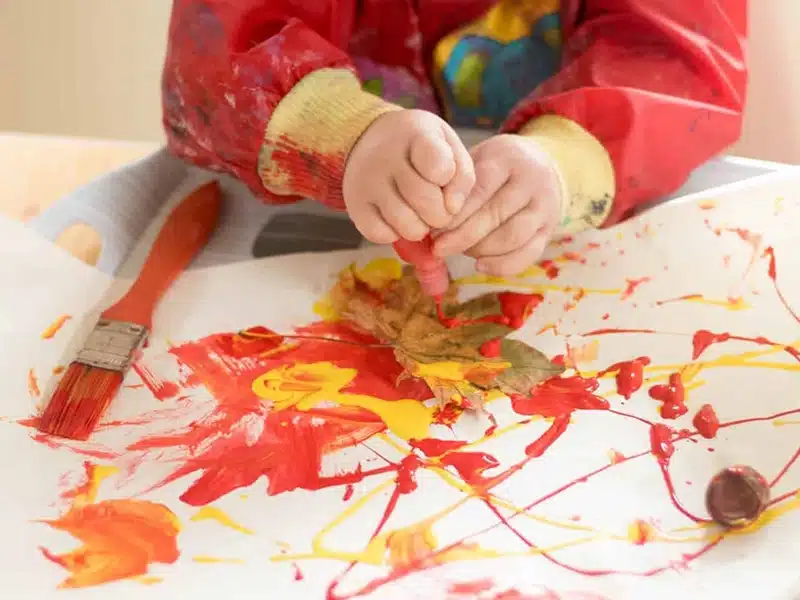
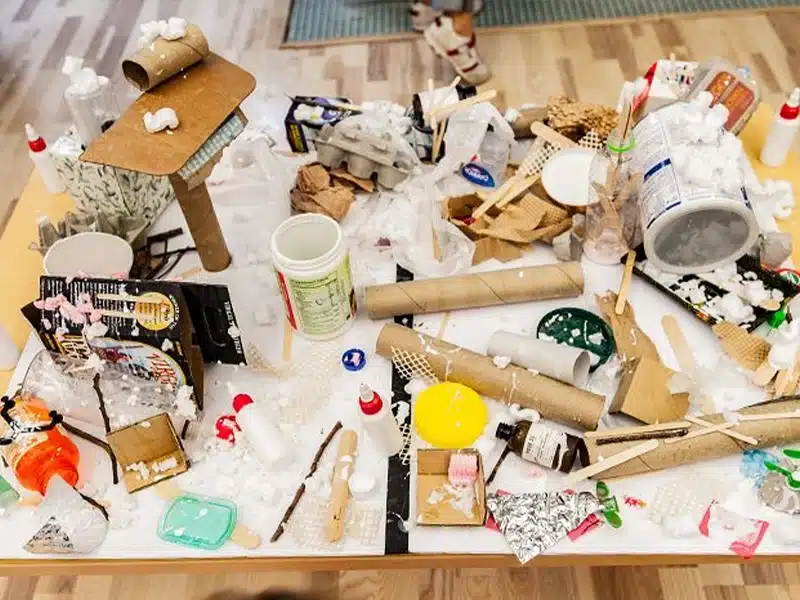
How to Set Up a Process Art Space in Preschool
Designing an adequate process art space is critical to nurturing creativity in toddlers. If you’re looking to create or enhance such a space, here are essential components to consider—and remember, services like Xiair can help design and furnish this creative area:
- Child-Centric Design
Arrange furniture and shelves at a child-friendly height. Low tables, accessible shelves, and child-sized chairs are essential, allowing children to work comfortably and access materials independently. Xiair provides various furniture solutions tailored for preschool art spaces, making creating an inviting, child-centric environment accessible. - Organized and Labeled Storage
Use clear bins and labeled containers for paints, clay, brushes, and natural items. Organized storage helps children understand where to find supplies and promotes responsibility as they learn to return items after use. Xiair’s storage solutions offer functionality and aesthetics, keeping the space tidy and encouraging independence. - Flexible Layout for Easy Movement
Arrange the space with clear pathways and flexible furniture that can be moved around as needed. This layout encourages free movement and exploration, allowing multiple children to engage in process art without feeling restricted. - Dedicated Drying and Display Area
Set up a drying area with racks or designated surfaces where children can leave wet paintings or clay projects. Also, create a display wall to showcase completed artwork, celebrating each child’s creative process. This display fosters pride and gives children a sense of accomplishment. - Art-Friendly Tools and Clean-Up Station
Provide aprons, smocks, and easy-to-clean surfaces, as process art for preschool can get messy. An accessible sink nearby or a designated clean-up area with paper towels and wipes encourages children to take responsibility for cleaning up after their projects. Xiair offers customized solutions for clean-up stations, making maintaining a tidy, art-friendly classroom easy.
With these elements, a well-designed process art space becomes an inviting environment where creativity thrives. By working with professional providers like Xiair, educators can ensure their classrooms are fully equipped and optimized for young artists.
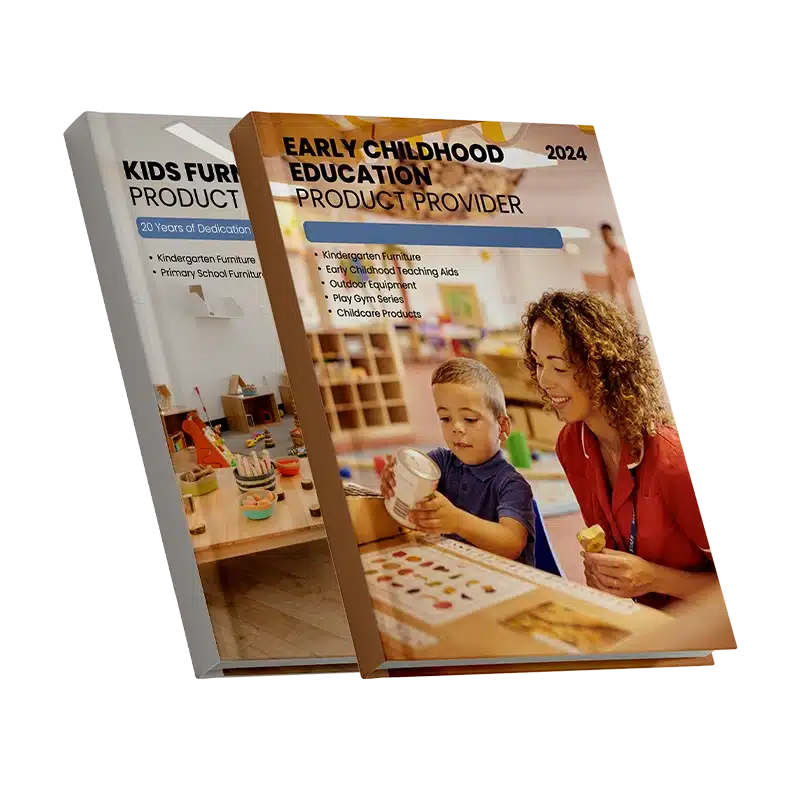
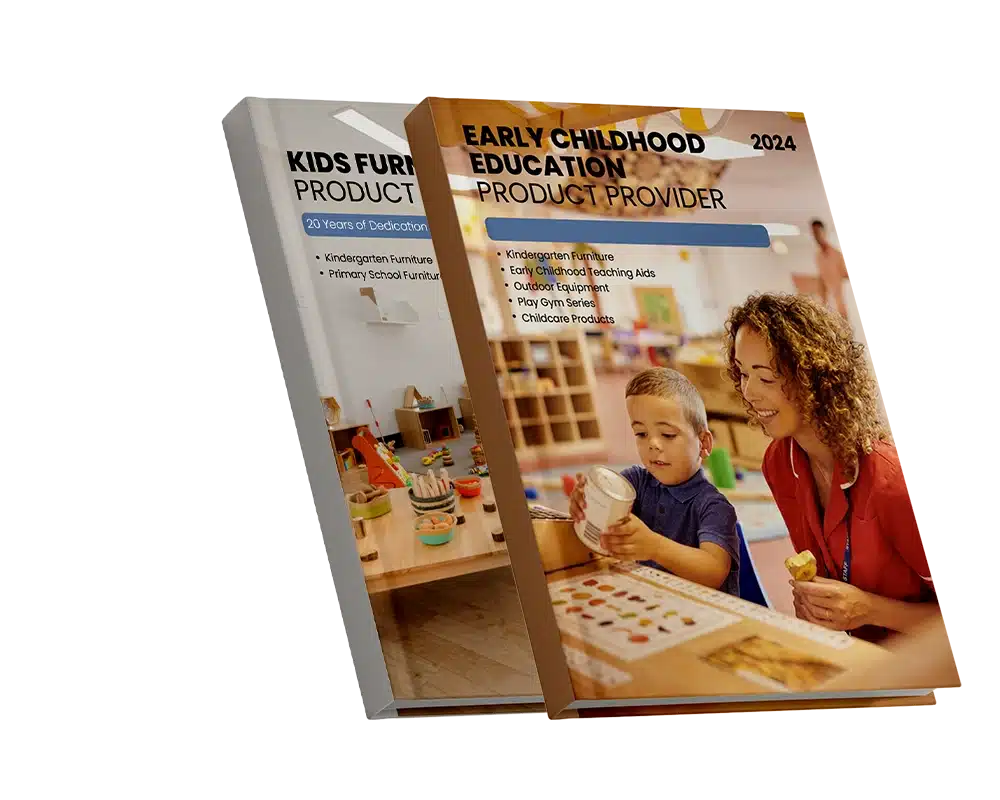
Engaging Process Art Activities for Toddlers
Process Art activities should be tailored to preschoolers’ developmental stages, focusing on sensory exploration, creativity, and fun. Here’s a collection of themed process art activities for preschoolers that will engage kids throughout the year:
1. Fall Process Art for Preschoolers
- Leaf Printing: Collect fallen leaves in various shapes and sizes. Dip them in paint and press them onto paper to create textured leaf prints. This activity introduces children to textures and patterns while celebrating the beauty of nature in autumn.
- Apple Stamping: Cut apples in half and let children dip them in paint to create colorful apple prints. This activity is visually appealing and introduces children to the concept of symmetry.
- Pumpkin Collages: Provide orange paper scraps, glue, and various natural materials to let children create their pumpkin-themed collages. This activity, perfect for pumpkin process art preschool, allows toddlers to explore layering.
2. Winter Process Art Preschool
- Snowflake Collages: Use white paper, cotton balls, and silver glitter to let children create their interpretation of snowflakes. This activity introduces symmetry and texture while allowing children to express their version of a winter scene.
- Ice Painting: Freeze colored water in ice cube trays with a popsicle stick in each compartment. Children can then use the colored ice cubes to paint on paper, creating unique, frosty patterns as the ice melts. This sensory-rich activity combines color mixing and temperature exploration, making it ideal for winter process art preschool.
- Snowman Finger Painting: Provide children with blue construction paper and white finger paint to create snowmen with their fingers. They can add scarves, hats, and buttons using additional colors or materials, making it a fun winter-themed sensory experience.
3. Ocean Process Art Preschool
- Underwater Collages: Give children blue paper, sand, shells, and fish stickers to create an underwater scene. This activity connects them to ocean themes, letting them explore textures and layering.
- Bubble Wrap Printing: Use bubble wrap to create ocean textures by dipping it in blue and green paint and pressing it onto paper. This method mimics water bubbles and is excellent for sensory exploration, encouraging children to think creatively about textures.
- Shell and Sand Painting: Provide children with small brushes, shells, and sand to create beach-inspired artwork. Let them explore the gritty texture of sand on paper, adding a tactile dimension to their ocean-themed creations.
4. Spring Process Art Preschool
- Rainbow Sponge Painting: Give children sponges and a palette of rainbow colors to paint vibrant, multi-colored patterns on paper. This activity introduces color theory and encourages them to explore blending techniques.
- Flower Stamping: Provide accurate or foam flower shapes to dip in paint and stamp onto paper. Toddlers can experiment with overlapping colors to create unique flower patterns, celebrating spring’s beauty.
- Nature Collages: After a nature walk, let children use collected items (like leaves, flowers, and small sticks) to create collages. This activity brings a sensory connection to nature and helps children engage with seasonal changes.
5. Holiday-themed Art
- Christmas Process Art: For preschool Christmas process art, give children green and red paint, and let them use their fingers to create abstract holiday trees on paper. They can also use glitter and cotton balls to make “snowy” decorations.
- Valentine’s Day Heart Art: Provide heart-shaped sponges and pink, red, and purple paints. Let children stamp hearts on paper or fabric, exploring love-themed art in a freeform way.
- Thanksgiving Process Art: Allow children to make handprint turkeys with brown paint, adding colored “feathers” with paint or paper. This is an excellent sensory activity for Thanksgiving process art for preschoolers, as it uses both touch and creativity.
These process art activities for toddlers keep art engaging and sensory-rich, adapting to seasons and holidays while fostering creativity and exploration. Each activity encourages self-expression, making it perfect for kids in a process art preschool environment.
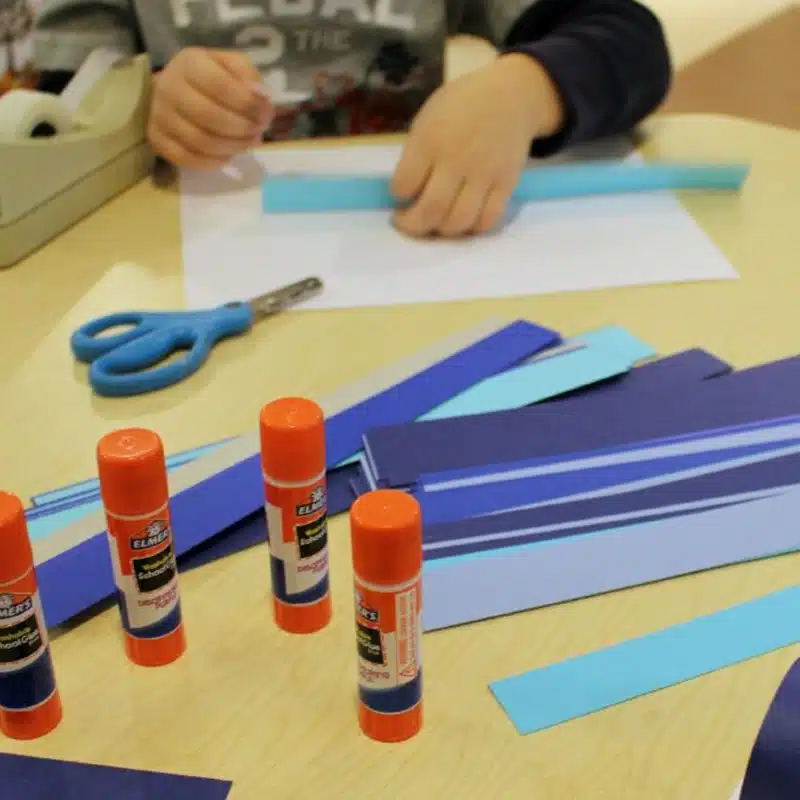


How to Bring Process Art into Your Preschool Classroom
Incorporating process art into your preschool classroom can transform the learning environment, fostering creativity, exploration, and joy. Here are some steps and tips to help make Process Art a seamless part of daily learning:
- Start with Simple Materials and Gradual Expansion
Introduce basic materials like crayons, paint, and clay initially. As children grow comfortable with process art projects for preschoolers, they gradually add new materials, like recycled objects, nature items, and sensory materials (such as sand and fabric). This incremental approach helps avoid overwhelming toddlers. - Integrate Process Art into Daily Routines
Dedicate a regular time slot each day or week for process art. A consistent routine allows children to anticipate and look forward to art sessions. This regularity also helps them develop a creative habit and feel comfortable expressing themselves without judgment. - Introduce Seasonal and Thematic Process Art Projects
Keep activities fresh by aligning process art ideas for preschoolers with seasonal or holiday themes. For example, try easter process art for preschoolers in spring or fall process art for preschool as autumn arrives. Thematic activities connect children to real-world events and seasons, enhancing engagement. - Encourage Self-Reflection and Sharing
After each session, encourage children to share their artwork and discuss their creative process. Simple questions like, “What did you enjoy most?” or “How did you decide to use these colors?” help children reflect on their choices and build communication skills. - Create a Supportive Art Space and Involve Parents
Display children’s artwork around the classroom to celebrate their achievements and make them feel valued. Additionally, parents should be kept involved by sharing photos or displaying artwork during parent events, highlighting the benefits of process-oriented art for preschoolers.
Following these steps, you can create a classroom environment where Process Art is seamlessly integrated, allowing children to develop essential life skills and embrace their unique creative voice.
Conclusion
Process Art Preschool is a transformative approach that nurtures children’s creativity, resilience, and cognitive skills in a safe, supportive environment. Process Art fosters a growth mindset in child by emphasizing the creative journey rather than focusing solely on the final product. Children learn to take risks, embrace new ideas, and celebrate their unique perspectives—all essential for lifelong success.
Incorporating Process Art into preschool education isn’t just about art; it’s about developing foundational skills to serve children in every area of life. A thoughtfully designed process art space, equipped with appropriate materials and set up to promote self-expression, further enhances this approach. By partnering with services like Xiair, educators can ensure they have the right tools and setup to make Process Art a central and rewarding part of the classroom experience.
From seasonal activities like fall process art for preschoolers to setting up an engaging space, Process Art offers a rich world of possibilities. Embrace this approach, and watch young minds thrive, growing into confident, curious, and resilient individuals.



